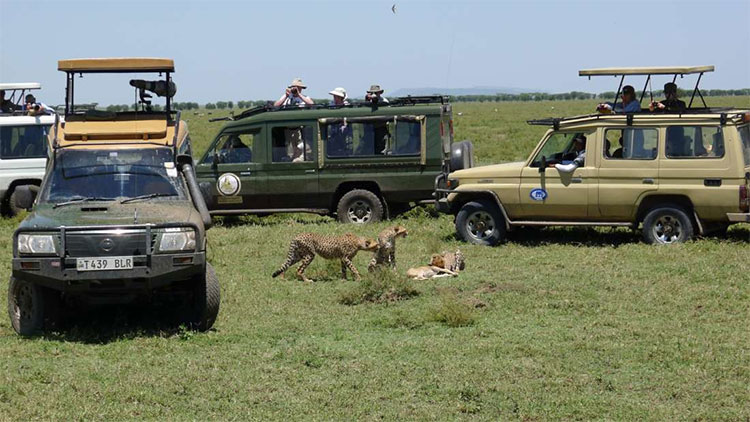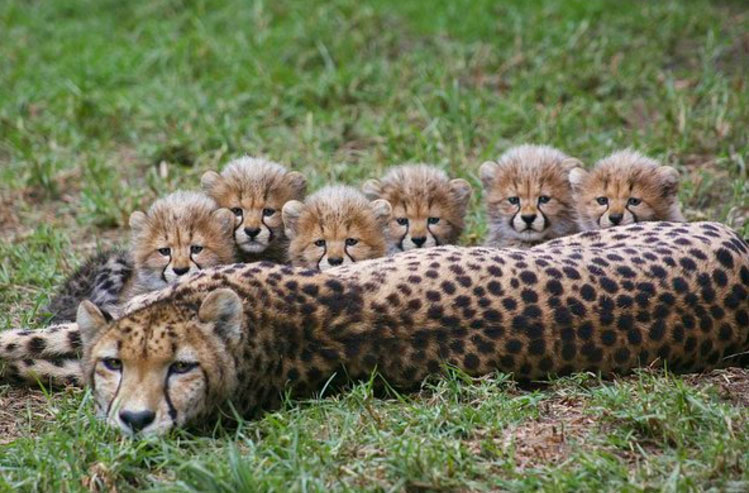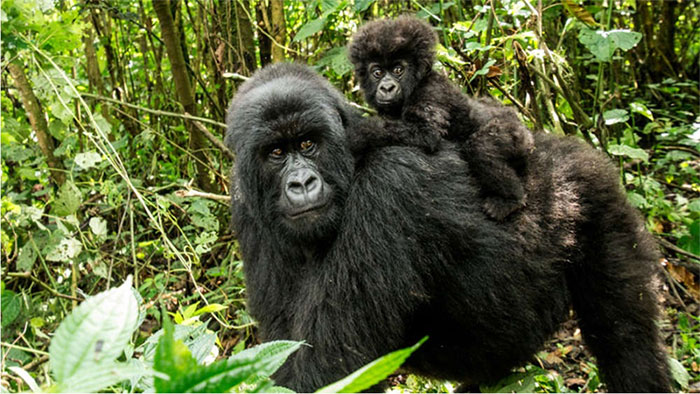Wild tours are causing serious consequences
Wild tours are a way for people to have a direct view of the life of wild animals. Better understand, and thus contribute to protecting them.
However, according to a recent study published in Ecology and Evolution magazine, things are not only pink. In some respects, such trips are adversely affecting wildlife, especially with jaguars in Kenya and Africa.

In some respects, such trips are adversely affecting wildlife.
Specifically, the study found that tours with too high density at Maasai Mara Park (Kenya) are making a large number of jaguars unable to raise and teach children properly. In areas with a high density of tourism, the average number of mothers who can only raise is 0.2 and the children have successfully established themselves in each group.
Meanwhile in small areas, the number falls into about 2.3 children.

The jaguar in Kenya is having trouble raising children.
According to Dr. Femke Broekhuis - the study author - the reason is also because the tourism density is too thick. Each group of people constantly appeared, observed newspapers every day, and led to the consequences.
"There is no evidence that visitors directly cause animal deaths" - Broekhuis said.
During the study of newspapers from 2013 - 2017, Dr. Broekhuis said that she had seen 64 cars coming to see one newspaper within 2 hours.
"So, the impact here is indirect, when it causes the habit of the newspaper to change, increase the stress level, or reduce the amount of food consumed. go".

Touring the gorilla, tourists contributed up to $ 200 million a year to the National Volcanic Park here.
However, it is undeniable that wild tours still bring huge benefits. Tourists come, they pay money and the money is used for animal conservation. As in the case of Gorilla gorillas, for example, it is an example of the effect of wild tourism being very successful.
In Rwanda - one of the three countries with gorilla observation tours, tourists contributed up to $ 200 million a year to the National Volcanic Park here. This money will be used to improve animal conservation, helping not only gorillas, but also countless other primates in the mountains. And according to statistics, the number of primates here has increased by 25% compared to 2010.

Reducing the density of vehicles can be a solution.
The problem now is just how to limit the impact of visitors on animals. It is possible by limiting the number of visitors, limiting the number of vehicles in each stage, and preventing vehicles from getting too close.
- Space travel
- Fukushima is flooded with radioactive wild boar
- Terrors of molten nuclear fuel
- Why do wild animals drink water from dirty ponds and lakes without getting sick?
- The Arctic is burning very strongly and the fire is so big that it can be seen from outer space
- US officials have a headache for wild boar
- Fascinating wild dogs with lovely looks, personality like wolves
- Dogs and wild boars died in a bloody fight in Indonesia
- The 227kg wild boar monster was defeated
- 6 habits that are thought to be harmless, but are actually causing the Earth to shed tears
- Central region flooded in flood
- The deer is worrying in England
 'Fine laughs' - Scary and painful torture in ancient times
'Fine laughs' - Scary and painful torture in ancient times The sequence of numbers 142857 of the Egyptian pyramids is known as the strangest number in the world - Why?
The sequence of numbers 142857 of the Egyptian pyramids is known as the strangest number in the world - Why? History of the iron
History of the iron What is alum?
What is alum?